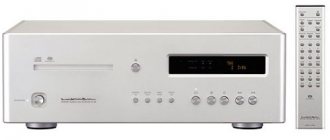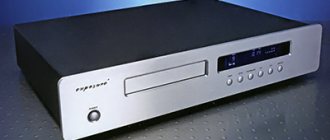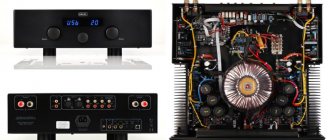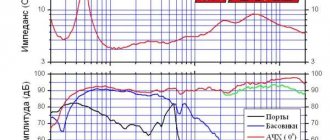Roksan Caspian M series-1 review. WHAT HIFI Magazine
The amp showcases the punch and fast-paced nature of heavyweight champions.
Save and read later -
Roksan Caspian M series-1 $1700 ***** FOR Energetic, balanced sound; great lows
CONS Unattractive remote control; price
VERDICT The amp showcases the punch and fast-paced nature of heavyweight champions; wonderful device THE FIRST INCARNATION of the amplifier from Caspian appeared to audiophiles six years ago and throughout this time it has been modernized. The latest Caspian model became one of the most expensive participants in the test, but even from the outside you can see that the price is quite justified. Some may think that the Roksan is unconventionally attractive, others that it looks simply ugly, but the level of workmanship is very high. A massive and carefully finished front panel, a “pressing” body with a pleasant weight; large handles that require effort to rotate, and even the rubberized feet look durable and sturdy. However, all this feeling of solidity disappears as soon as you pick up the remote control. In its work, Caspian immediately captures attention. The sound can be described as full, solid and clean. The device confidently controls sudden changes and demonstrates the explosive nature of the bass. Therefore, the furious sounding Nightfreak and the Production quality is impressive, although the appearance is a matter of taste. The Coral's Sons of Becker "rushed" at an excellent pace with good resolution and energy, while Shut Up from the hip-hop album Elephunk was conveyed with a noticeable emphasis on first beat. The lows are expressive and captivate not so much with the reserve of dynamics as with the ability to convey all the nuances of the recording in this spectrum. In addition, Caspian interprets the classics beautifully. The intimate and realistic nature of the performance of Schubert's Fantasia in F Minor is complemented by the superb skill demonstrated by all participants in the test. But Roksan has its own trusting voice, which attracts attention and is so infectious that short listening turns into long dialogues with music. The device will not forgive you for bad recordings, and the only drawback will be the high price. Naturally, there were some comments. Roksan has a minimal set of functions, but the same can be said about Nairn. It does not impress with its sophistication, but Arcam also suffers from a similar “defect”. Even his appearance cannot be called cool. But it costs $1700 and we have the right to demand more.
Prepared based on materials from the magazine “WHAT HIFI”, April 2004 www.whathifi.ru This
review was read 14,089 times
CD player 'Roksan Caspian M series-1' /V. Kozyrev/ 'Audio Store' No. 3(56) 2004
After the appearance of SACD and DVD-audio formats on the market, the world audio press has been energetically trying to send CD players on their last journey for about five years now. The current situation began to resemble a well-known joke when, when asked “How is your health?”, an elderly person answers “You can’t wait!” It is enough to listen to discs from XRCD 2 ('JVC'), 'Reference Recordings' or other similar labels to understand that the potential of the CD-audio format is far from being exhausted by most record companies. In my opinion, the sound quality of CDs has improved somewhat in recent years, and I am convinced that the advent of SACD and DVD-audio played, directly or indirectly, a catalyst role in this process. So the CD is not giving up and will not leave the stage any time soon.
The 'Caspian' range of audio components, released by English about seven years ago, turned out to be so successful and popular that for the new line they decided to leave the name familiar to audiophiles, making a small addition - 'M series-1'. The 'Roksan Caspian M series-1' CD player is an improved version of its predecessor. The element base has been significantly improved, changes have been made to power supplies, chassis, and servo drive (reading quality has increased). New double-sided copper-plated printed circuit boards, an ultra-precise clock generator, and two low-noise toroidal transformers (for the analog and digital parts) were used. Digital-to-analog conversion is carried out by the 'Philips TD1305T BCC-DAC2' chipset (with 18-bit resolution).
Believe it or not, on the front panel of the 'Roksan Caspian M series-1' there are two 'Play/Pause' buttons - to the right and to the left of the tray! It’s probably more convenient this way - you don’t have to think about which side to press. On the rear panel there is an analog output (by the way, the RCA connectors are of very high quality) and a digital electrical output S/PDIF (BNC connector).
Notes in the margins
I don’t know what exactly was improved in the servo drive, but the designers of the Roksan Caspian M series-1 clearly need to work more on the readout quality. Sometimes, for some unknown reason, difficulties arose with playing not only CD-Rs, but also the branded CD itself (disc 2), despite the fact that both discs were in almost perfect condition and there were never any problems with them. In addition, unpausing and transitions between tracks were accompanied by clicks, and in pause mode you could hear quiet tapping sounds, as if the disc was hitting something. I still hope that we just got a bad copy. Listening to various CD-Rs showed that the 'Caspian M series-1' reproduces recordings from phthalocyanine discs (with a light golden working layer) better.
Sound quality
Recently, while putting my modest CD collection in order, I came across a 'well-forgotten' SACD (disc 1), which a kind person gave me a year ago. This is the fruit, one might say, of home music-making by Mark Levinson and his musician friends: the disc was recorded at Levinson's Red Rose Music store in New York on the Sony DSD digital station. From the point of view of sound engineering, the recording is amateur: the acoustics of the room are poor, the microphones are not always well placed, etc. Nevertheless, its quality is simply fantastic, even after conversion to the 'CD-audio' format (hybrid disc). This is what it means to record a master tape according to audiophile canons in DSD! It's a pity, the artistic value of this creation is approaching zero. Only two tracks out of 12 are worthy of attention: 'Alemanda' by I.-S. Bach (played on a classical guitar with nylon strings) and the ragtime 'Alligator Crawl', played on a luxurious 'August Fo..rster' concert grand piano.
So, let's listen to 'Alemanda'. The sound of 'Roksan Caspian M series-1' is bright, lively, emotional, expressive and sophisticated. From the beautiful and unusually natural timbre of a classical guitar, sparkling in shades, like a well-cut diamond, you experience almost physical pleasure. Even from this recording of a solo instrument, one can clearly hear that the device is endowed with the ability to correctly form a three-dimensional sound space.
Ragtime 'Alligator Crawl' is recorded almost as unusually as Chopin's Ballade No. 4, from a DVD-audio/video sampler, which I talked about in the article dedicated to 'Theta Digital Compli' (see 'AM' No. 2 (55) 2004 ). It seems that Levinson (with friends) also installed only one pair of microphones, but not behind the pianist, but in front of him. As a result, when listening, it seems that the virtual keyboard is stretched across the entire width of the sound stage (lower register on the right, upper register on the left), and as the pitch changes, the piano sound moves in the horizontal plane. Here the three-dimensional space of the sound image is much more pronounced than on the 'AIX Records' sampler, so sometimes you get the feeling that the piano sound is moving in the vertical plane. The effect is quite interesting.
We turn on ragtime. Damn it! It seems that on our audio system, led by 'Roksan Caspian M series-1', 'August Fo..rster' sounds even better than in real life! The timbre of the instrument, bright and warm at the same time, is rich and multifaceted. The sound overall is transparent and detailed. The sound stage is spacious, large-scale, filled with air.
Reproducing Mussorgsky's 'Pictures at an Exhibition' with Ravel's orchestration (disc 2), the 'Roksan Caspian M series-1' tract superbly conveyed the dynamic contrasts and nuances that so abound in this work. His sound was both powerful and, at the right moment, delicate. It is worth noting the good timbral resolution of the device: the variety of sound colors and shades competed with the paintings of the great impressionists. The character of execution of 'Caspian M series-1' is extremely clear, verified, you can feel what is called 'the hand of a master'.
And the last soundtrack is music from the movie 'Schindler's List' (disc 3), the composition 'Remembrances' ('Remembrance'), violin solo - Itzhak Perlman. '...And an icy wave of goosebumps down your spine...'. A striking example of how the advantages of an audio component in the 'physical' aspects of sound (naturalness and variety of timbres, accuracy of transmission of the dynamic structure of music, etc.) develop into something more - into a piercing performance, spiritual and sublime.
Control path
| CD player 'Orelle CD100 evo'; pre-amplifier 'Roksan Caspian M series-1'; power amplifiers 'LAMM M1.1'; acoustic systems 'ProAc Response 2.5; 'Audio Note AN-S' speaker systems interconnect unbalanced cables 'Harmonic Technology Pro-Silway II'; interconnect symmetrical cables 'Harmonic Technology Pro-Silway II'; rack for 'Sonus Systems Elite 1350' equipment. |
Technical parameters according to the manufacturer
| Pickups ($899) | |
| Reproducible frequency range with frequency response deviation ±0.3 dB Harmonic distortion at a measuring signal frequency of 1 kHz Signal/A-weighted noise ratio Output voltage Power consumption from the mains Dimensions Weight | 20–20000 Hz 0.002% 110 dB 2 V 15 W 432 x 330 x 80 mm 10 kg |
Taught by bitter experience, we are already accustomed to the fact that nowadays progress takes on bizarre forms - today the new is often worse than the old. Fortunately, the hero of our testing does not confirm this alarming trend. 'Roksan Caspian M series-1' is undoubtedly a successful device, a worthy successor of the good English traditions expressed in the line of 'Caspian' components
CD player Roksan Caspian M2 CD
Manufacturer: Roksan Audio Limited
www.roksan.co.uk
Price: 99,000 rub.
The upper section is very natural - not only the trebles themselves are drawn in it, but also the smallest air components
The Roksan Caspian M2 CD player represents the pinnacle of digital sources from the famous British brand. It has a carefully thought out design where the power design is given top priority. To provide all components of the device with the cleanest possible energy, two powerful toroidal transformers are installed inside. Such a multi-circuit power supply allows not only to significantly reduce the mutual influence of nodes, but also to protect the digital part of the device and the sensitive analog output stage from harmful interaction. The transport mechanism located in the center is designed to work only with CD-Audio discs, while support for CD-R and CD-RW discs is declared. The well-known PCM1798 chip from Texas Instruments is responsible for converting digital into analogue. This two-channel converter has long been used in serious audio equipment and is characterized by a wide dynamic range and low nonlinear distortion. A pair of high-quality gold-plated RCA and balanced XLR jacks are available for amplifier output, providing the highest possible sound quality. There are also digital outputs - optical, coaxial and AES/EBU.
The British source is remembered for its extremely emotional, driving sound, but audiophile precision and detail are also present in it. For example, tonally correct mid frequencies, distinguished by fine detailing of nuances and high sound resolution, without protruding artifacts. One of the most valuable qualities of the player is the smooth presentation of all ranges, harmoniously forming a single whole. You just press play and the music appears. Having carefully analyzed the sound aspects of the model, you discover very precise and strong bass, true in structure and weighty in depth. The upper section is very natural - not only trebles are clearly depicted in it, but also the smallest air components. The sound space can be described as sufficient in width and clearly echeloned in depth. The front edge of the stage is somewhat close, but there are no questions about the accuracy of the positions of individual instruments.
PLEASED
Accurate reproduction of the recording atmosphere, excellent dynamic qualities.
DISAPPOINTED
The leading edge of the soundstage is sometimes pushed too far towards the listener.
Premium CD Players | Audiolab 8200CDQ | Audio Analogue Paganini 192/24 REV2.0 | Denon DCD-2020AE | Roksan Caspian M2 CD | Musical Fidelity M6CD/DAC | Goldnote Koala Anniversary Tube | Accustic Arts Player ES | Parasound CD1 | T+A Music Player Balanced | Plinius Toko | Audionet ART G3 | Densen B-475+ Super Leggera
share
Tags: Roksan
Caspian M2: organized and exciting. WHAT HI-FI review, October 2013
If a model receives an Award two years in a row, this indicates its exceptional qualities. Roksan Caspian M2 is very good; We no longer waste time putting it away on the shelf - we still have to take it out again. The thing is that it has a great sound, and its possibilities are almost limitless. Roksan has many advantages in any respect. Its sound is big and powerful, much more compelling than you'd expect at 85 watts per channel. Any soundtrack by Hans Zimmer performed by Caspian M2 will instantly transport you into the atmosphere of a grandiose and dangerous adventure. In Mombasa from the Inception soundtrack, Roksan impresses with rhythm and dynamics. With less meticulous amps, complex drum parts turn into inarticulate mush; Caspian M2 carefully builds their intricate designs while the strings build up the tension. Detail is exceptionally high; The soundtrack to The Dark Knight by the same Zimmer demonstrates a rare depth of elaboration. In the second minute you can easily hear the sound of pencils hitting the ceramic bowls. Of course, this approach extends not only to exotic types of percussion; Any type of music performed by Roksan sounds clear and textured. Let's move from gloomy Gotham City to sunny Havana with Buena Vista Social Club and admire the multi-layered sound stage, as well as the excellent focus of images on it. The natural rhythmicity of Roksan gives the music additional charm - both the slow, sad Chan Chan and the groovy Candela are simply wonderful. However, in terms of richness and expressiveness of sound, Roksan is somewhat inferior to Rega - which has a slightly more sparse sound, but more energetic and agile, with more pronounced attack and clarity of elaboration. In turn, Caspian M2 has a warmer, fuller and more relaxing character. In addition to its pleasant sound, the Roksan amplifier is also distinguished by its pleasant appearance. However, not all editorial staff agree with this; Some people find the chrome knobs and brushed steel body too ostentatious. And yet it cannot be denied that the Caspian M2 looks very stylish, solid and high quality, and the regulators are reliable and convenient. A fan inside the case protects the circuits from overheating. A learning remote control completes the clever and cute package. It’s not for nothing that the Caspian M2 bears the title of category leader; he's great in almost every way. This is one of the most expensive test models, but its advantages fully justify the price.
Roksan Caspian M2 Integrated Amplifier Silver
Since the mid-80s, the British company Roksan has made many excellent vinyl players and correctors, and surprised with the originality of its tonearms and “speed boxes” (units that maintain a stable rotation speed of the LP). However, in the current Roksan assortment, which, as before, includes everything for vinyl and even speakers of its own production, the CD player and integrated amplifier of the Caspian series are of greatest interest. This line was released back in 1999, and more recently underwent modernization and received the prefix “M series-2” in its name. These original flat components are available in two types: with a silver or black front panel.
Roksan Caspian M2 Integrated Amplifier has separate power supply for the preliminary and output sections, which makes it possible to significantly reduce distortion. Each section uses a separate toroidal transformer with exceptionally low noise levels. At the same time, Roksan Caspian M2 is capable of developing a power of 85 W per channel (at 8 ohms) and 125 W with a four-ohm load. The device has a carefully thought-out symmetrical circuit design and selected premium-class components. Effective short circuit protection is included, and a special protective circuit using high-current relays is installed at the output. On board there are means to detect problems in the power supply, as well as a diagnostic/warm-up function for the amplifier when turned on.
Roksan Caspian M2 Integrated Amplifier has a somewhat unusual industrial design and has a reliable anti-vibration housing made of stainless steel. To adjust the volume, a high-precision motorized attenuator with a built-in red LED indicator is used. The output transistors are mounted on a special heat sink, to which a small fan with a thermostat is attached. The amplifier received six RCA inputs and one balanced XLR. In this case, the input called “CD” is equipped with a mechanical selector for choosing between unbalanced and balanced connectors. There is also an input for direct access to the amplifier stage, and the outputs are a fixed Tape Out for recording and two adjustable Pre Outs, to which you can connect a speaker or an active subwoofer. Four screw terminals are used to connect speaker systems, and there is a complete universal remote control to control the device.
The Roksan company emphasizes that this model is convenient to use in conjunction with power amplifiers from the Caspian series to build an audio system with several amplifiers for bi-amping or tri-amping. The Roksan Caspian M2 Integrated Amplifier copes with even the most delicate and capricious musical episodes; its controllability is a recognized masterpiece of electronics. The reproduction of details is harmonious and emotionally rich, which refers to the internationally recognized Roksan L1.5 preamplifier.
Compact amplifiers always cause mistrust, but in the case of Roksan, doubts can be safely left behind. This system sounds lively, physical and festive. The bass dynamics are excellent, and the rest of the range is simply good. The middle is conveyed spiritually (you can’t find any other words), and the top is not sleek and realistic. The sound resolution can be described as high. Although not a record in its class, it is without quirks - details are equally clearly revealed throughout the entire range. Characteristics of Roksan Caspian M2 Integrated Amplifier
Output power 2 x 85 W (8 Ohm), 2 x 125 W (4 Ohm) Frequency range 1 Hz - 90 kHz (- 3 dB) Harmonic distortion at 10 W/8 Ohm: 0.002% ( 1 kHz), 0.015% (20 kHz), at 50 W/8 ohms: 0.0025% (1 kHz), 0.03% (20 kHz) Signal-to-noise ratio 108 dB (line input) Gain 40 dB Gain damping 160 (8 ohms) Input sensitivity 240 mV (line input) Input impedance 47 kOhm Output voltage 240 mV (Tape Out), 700 mV (Pre Out) Inputs 6 line RCA, balanced XLR, RCA input for direct access to the power amplifier stage Tape Out (RCA) outputs for recording, 2 x Pre Out (RCA) Other switching ground terminal Power supply low-noise toroidal transformers for the power amplifier stage (350 VA) and for powering the pre-section (60 VA), 5 fully stabilized power rails Power consumption 330 W (8 Ohm), 550 W (4 Ohm) Speaker output 2 pairs of screw terminals Universal remote control Dimensions (WxHxD) 432x80x330 mm Weight 14 kg







